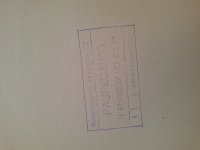Alexandru Matveev
Diaghilev Sergei Pavlovich
The World of art
SOLD
Item Details
St. Petersburg, 1904, Soft cover
Poor
In 1898, Diaghilev managed to convince famous figures and art lovers S. I. Mamontov and M. K. Tenisheva to finance a monthly art magazine. Soon, a double issue of the magazine "World of Art" was published in St. Petersburg, with Sergei Pavlovich Diaghilev as its editor.
This was the first art magazine whose character and direction were determined by the artists themselves. The editors informed readers that the magazine would examine works by Russian and foreign masters "of all eras of art history, to the extent that the said works are of interest and significance for contemporary artistic consciousness."
The magazine's greatest successes were in its publications on Russian art. Entire periods of art were rediscovered, not just the names and works of individual masters: works by artists, sculptors, and architects of the 18th to the first half of the 19th century, as well as decorative and applied art, which was considered at that time to be a "lower" kind of art, unworthy of serious attention. Historical and artistic essays and articles were distinguished by their high content and brilliant form; they often used archival and little-known materials. These publications, as is now recognized, made a significant contribution to Russian art criticism.
The magazine paid much attention to contemporary Russian art, dedicating entire issues to a number of artists - V. Vasnetsov, Repin, Serov, Levitan, Somov, E. Polenova, Malyutin, Nesterov and others. Some artists themselves acted as authors of articles and essays - Bilibin, Yaremich, Nesterov.
"World of Art" also showed interest in music and theatrical affairs, especially the artistic design of performances.
Among the magazine products of that time, "World of Art" stood out for its appearance. It was a large-format publication on excellent paper. The texts were printed in Elizabethan font, which the editorial board members discovered in the type foundry of the Academy of Sciences. The editorial board paid special attention to artistic design. The cover, front pages, frames, headpieces, and endings of each issue were created by the artists of the World of Art movement Bakst, K. Korovin, Somov, Lanceray, Dobuzhinsky, and others. The magazine, as a rule, contained many excellent illustrations - photographs and artistic reproductions made in different techniques. They were often ordered and prepared abroad. The appearance of the magazine "World of Art" became a significant stage in the history of Russian graphics and printing.
As the magazine's publication progressed, its objectives changed, becoming ever broader. Articles began to appear about the great representatives of world culture—Pushkin, Tolstoy, Dostoevsky, Wagner—who dominated the minds of the Russian intelligentsia at the time. In 1900, a literary section was created in the magazine.
The first issue of the magazine opened with a large article signed by Diaghilev, "Complex Questions." The article was essentially a defense of the further development of the Russian realistic school. Some of its provisions are still relevant today, such as the need for an artist to connect with his contemporary generation. Instead, the article contained much that was confusing, erroneous, and in particular a deeply incorrect assessment of the revolutionary aesthetics of the 1860s.
Diaghilev considered talent a national treasure. He was endowed with a rare ability to recognize it at the very beginning. He was one of the first to note and support Bakst, Alexander Benois, Malyutin, Malyavin, Ostroumova, Yuon, Yakunchikova and others. He wrote excellent and deeply meaningful characterizations of many artists who were alive at that time. He considered it his moral duty to honor the memory of people who enriched Russian art. The obituaries dedicated to I. Levitan and M. V. Yakunchikova were written by him with great love and understanding of the historical place of these artists.
Diaghilev was the first critic to pay attention to book illustration. In 1899, in his article "Illustrations for Pushkin," he expressed a number of opinions about the nature and characteristics of this difficult art, which retain their significance to this day.
Diaghilev was the first to formulate and raise some of these themes in the history of Russian art, and the position he took deserves attention, especially his views on the problem of cultural exchange between countries.
Diaghilev the editor should also be given credit. He was able to attract talented young artists and critics of his time to work for the magazine. He introduced the art-historical talent of A. N. Benois to the general reader and in the spring of 1899 invited I. E. Grabar, then a budding critic, to collaborate. Without the daily and comprehensive assistance of the artists, it would have been impossible to publish the magazine for over five years. They not only worked on its design, but were also concerned with the content of the notes and articles. In 1902, Serov, for example, asked to publish a message about the work of the Tretyakov Gallery Council. Under pressure from Diaghilev, some of the artists took up the pen for the first time, others sought funds to publish the magazine among their clientele, and some themselves provided it with financial support. The artists considered the magazine their brainchild, and it was not for nothing that M. V. Nesterov, in response to V. P. Burenin's abuse of Diaghilev, said in 1898:
"The names of honest and talented people who consciously trusted him, recognizing in him a capable man with good taste, are a guarantee for Diaghilev."
A.P. Chekhov gave a high assessment of this activity of Diaghilev. "The World of Art," in particular, he wrote to Diaghilev in 1903, "should be edited by you alone."
What you get:
Мир Искусства 1904 - 3,5,6,7,8,9,10,11,12. In original covers, unbound.
V.5 and 11. missing back cover.
V. 6. Back cover teared.
V.7 missing lower half of front cover.
V. 3 front cover teared
V. 10 froncover teared missing back cover.
Мир Искусства 1903. 1,2,3,4,5,6,9
V. 1-2 missing back cover.
V 3. Missing covers and title.
V. 4 missing back cover
V. 5-6. OK
V. 9. OK.
Хроника журнала мир Искусства 1903. V. 2-11, 16.
Plus several unidentified numbers of Mir Iskusstva. Missing covers and titles.
Sold as is.
Alexandru Matveev
Alexandru Matveev
80/3a sudecka
Wroclaw, Lower Silesia, 53-129
Poland
Phone: +48726443990
Featured Catalogue
Specialities
Eastern Europe, Poland, Rossica, Russia
More Information
Booth 4
Shipping and Returns
Estimated delivery time from 2 to 4 weeks to USA and 5 working days to Europe. Expedited shipping.30 day return guarantee, with full refund including original shipping costs for up to 30 days after delivery if an item arrives misdescribed or damaged.
Payment options: Bank transfer, PayPal.
Additional Information
I'm an independent bookseller/collector focusing mainly on Eastern European and Russian antiquarian books, with over 15 years of experience.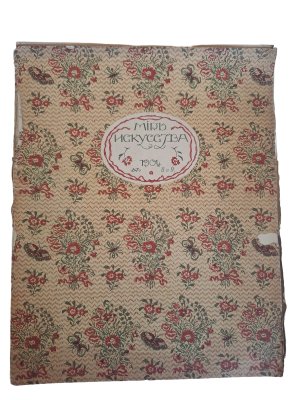

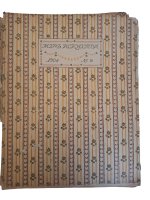
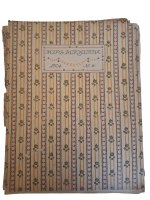
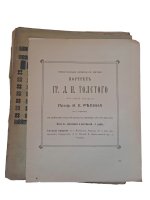
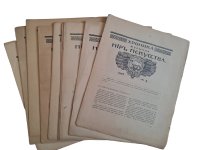
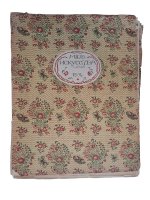
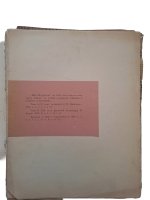
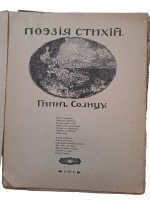
.jpg)
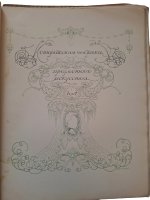
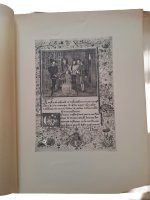
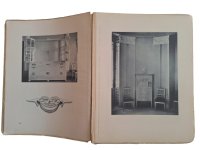
.jpg)
